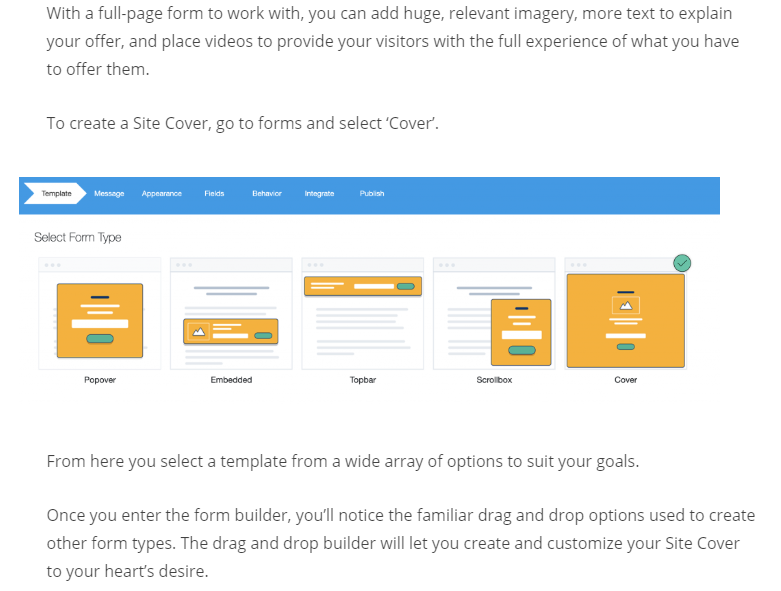

Last updated on
February 20, 2024
Blogs are one of the most effective ways to engage with your customers. They help you retain your visitors and build trust. But when you use your finance blog to earn money, there are many other factors that you should consider.
It all starts with how you want to monetize your blog. There are different practices that will work for you. Affiliate marketers have an advantage of direct links and they make money just by linking the products from their blogs. Coupons and deals website, Grabon, for instance, creates long blog posts about products and markets them through affiliate links.

Other hugely successful blogs like Moz use blogs as an important tool in selling courses.
So, if you would like to know how you can start making money from your hard work and the efforts that you put in making a blog, keep reading. We have listed 9 important things that you need to know to create a successful blog monetization strategy and in turn, make money.
‘The readers’ is your key area to study before monetizing your blog. It’s very important to understand what your audience needs and why they are on your blog. Here are a few questions that you should ask yourself about your audience.
a) How well do they interact with your blog?
You can either place links to other blogs on your website and check how many users click on them. A link rich blog is always good for keeping users busy while they’re on your site. Take a look at the below screenshot by marketing Guru, Neil Patel’ blog on how he uses the interlinking strategy to his benefit.

Don’t worry about links being saturated here. If the related blogs are of value to what the user is looking for, they will surely love it.
Another way to check audience interaction is by checking social shares on your blog. Wordpress plugins can easily help you set up your Social Media integration. You could also look for how the audience engages with your blog links when you share them on your social media pages.
b) What are their habits?
Before you start, learn how your users interact with the blog. Het maps will give you an idea of how your content is being consumed by the viewer. In the screenshot below, the highlighted parts are where the users have taken an action that is monitored in real-time by the tool through the cloud.

Image source: www.heatmap.com
The clear visual representation makes it very easy to make decisions about the length of your future blog posts, the design, and what aspects of the content should be focussed on.
The content you make is a direct retainer of the audience.
For affiliate marketers, create content that includes the products you create the affiliate links to. Users will click on the links when they understand what it is and want to get more information, or ultimately buy it!
Consider creating content around:
Take a look at the screenshot below from MySmartPrice’s YouTube channel.

A comparison between mobiles is a great strategy for MySmartPrice as it will increase trust amongst users and thereby can drive more traffic to its website.
You can consider making videos around products like unboxing, or honest reviews. Customers are likely to make a purchase when they feel knowledgeable and empowered to make the decision.
When you provide links to sources and related content in your blog, the reader is also likely to take a tour of what you have to offer. Thus, coming back to your site to take action whether you do affiliate marketing, or use Adsense to monetize the blog.
Rather than checking out the figures, you can analyze your current traffic sources and identify how much percentage of your traffic comes from your notifications. Almost every type of content like blogs and videos provide this matric.
Depending on your analysis you can decide whether you should ask people to subscribe to your blog, or tease them with an upcoming blog, and then prompt them to turn on web push notifications. The call is yours.
Strong CTAs drive people to a specific action. If you focus your content on giving some useful information to the users, you will get to know more about your subscribers, which in turn can help you create targeted content and boost traffic.
Before monetizing your blog, you must learn about how your content shows up for the people who search for it. A proper search term analysis can help you do this. Paste your blog link inside the site explorer tool of Ahrefs and click on the organic keywords button in the left menu.
You will get a list of keywords that triggers your blog on SERP (Search Engine Results Page). In the screenshot below from Ahrefs, you see the organic keywords that an Amazon blog ranks for. (You can access it from the Site explorer on the top menu in the Ahrefs tool).

Create your blogs to include those search terms and push your SERP rankings. For more terms, you can look up keywords that blogs similar to your rank for and improve your rankings.
a) Loading time
Minimize the loading time of your website. That’s very important. Long waits can drive a customer away.
You should consider all the optimizing strategies for a minimum wait for the user. Make sure the images are of the smallest size that they can be without compromising quality. Keep the code simple.
b) Customer surveys
Conduct surveys and collect reports from your audiences about their experience. In this step, you get to know about how a customer would rate their experience, how much are they likely to recommend the blog to their peers and more. You can go creative with the questions and monitor what type of surveys work better for you.
Many online tools help you build your customized survey with many predefined templates. The below template from Survey Monkey is a subtle example of how you can do it.

The data you collect directly relates to the experience that your customer is going to have.
Your blog should have a rich and appealing design. The graphics should be appealing and the product images should be very clear. So a good solution for you can be to hire a web design agency that meets your requirements. The trick is knowing what your audience likes and giving it to them.
In affiliate marketing, you could dedicate buttons inside of your blog with a CTA. These buttons direct the user to the product page in just a click.
Take a look at the below screenshot.

Image source: www.grabon.in
For this blog, the writer decided to showcase the products with important details and a clear CTA as a part of the blog. This not only enhances the look of the blog but also makes the design intuitive.
According to broadband.net, although the percentage of users is similar on mobile and desktops for websites browsing, the time they spend on blogs might be higher on mobile devices. That makes it necessary to optimize your blog for mobiles.
Here are 2 screenshots of the same blog in desktop and mobile view.

You could also use AMPs (Accelerated Mobile Pages). AMPs use AMP HTML and are optimized for mobile web browsing experience. Accelerated Mobile pages speed up the loading on mobiles and are great for creating landing pages if you decide to run specific campaigns to promote your blog.
An AMP landing page could contain snippets of a certain number of your blog posts on one page. Users can click on individual snippets to read the full blog. There are plenty of tools that help you to make a landing page that will convert. You can easily find a template online that you can customize to your needs.
A good responsive blog adapts to all devices without any obstructions to user experience. Images can be set in a collage, and content should be written crisply and to the point to avoid the long scrolls. You could try different styles of design and content for different blogs to see which one works better.
In order to understand a reader, you need to think like one. Try to identify what type of content would work better for them. You can play around the following areas to learn more about your audience.
Identify customer behavior in all these areas via testing it across different time periods and keep on improvising according to how your customers react.
If you send a snippet of your blog through an email, your traffic might increase. You can develop an email marketing strategy to keep your audience engaged, promote your blog, follow up, and more. Test which email subject lines work better than the others and what times do the open rates boost. Use tools available online for sending bulk emails.
By monitoring your email success rates, you are more likely to connect with the customer who wouldn’t have the time to browse online but are very active on their email app. To begin with, build an email database and send your first few emails. Once you feel that your emails have gained momentum amongst the readers, you can increase the number of emails you send.
A few practices you can follow:
Blog monetization is a big step in your online business. A well thought of strategy is the key to creating a successful blog.
A great design will make your blog unforgettable, whereas a good website that works efficiently on all mediums will provide users a positive, pleasant experience. Make a detailed study of who your audience is. That’s what will help you write the perfect content for them. But if you don't hit it the first time, continue testing and optimizing. It will help you in the long run.
When you create a blog that your audience likes, it's time for enhancements. Let your blog be a reflection of your audiences' behavior. Keep updating your strategy, and stay at the top of your game.
Content marketing guru at Mailmunch. I’m passionate about writing content that resonates with people. Live simply, give generously, stay happy.
Tags:

Hamna Abid
July 18, 2023

Ammar Mazhar
June 13, 2023

Ammar Mazhar
June 12, 2023